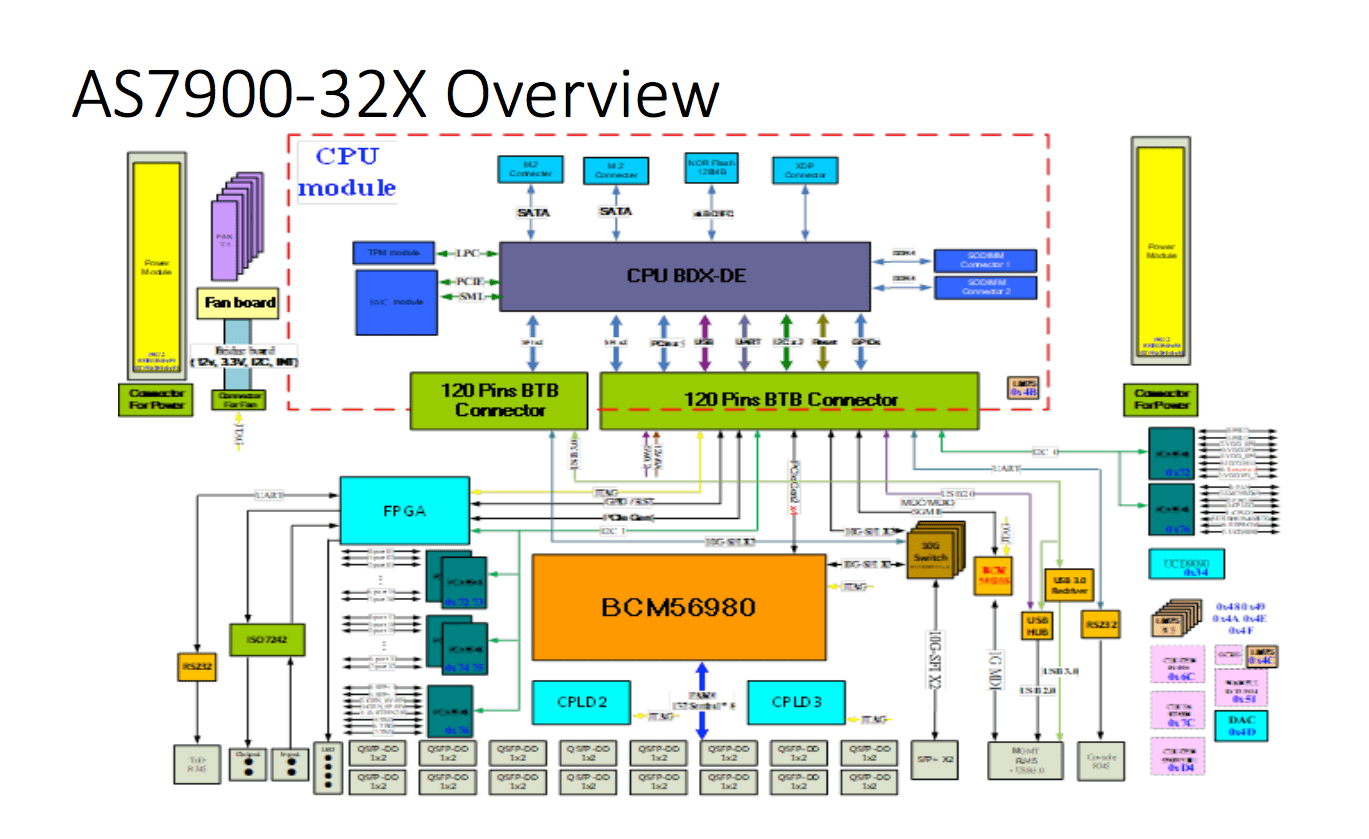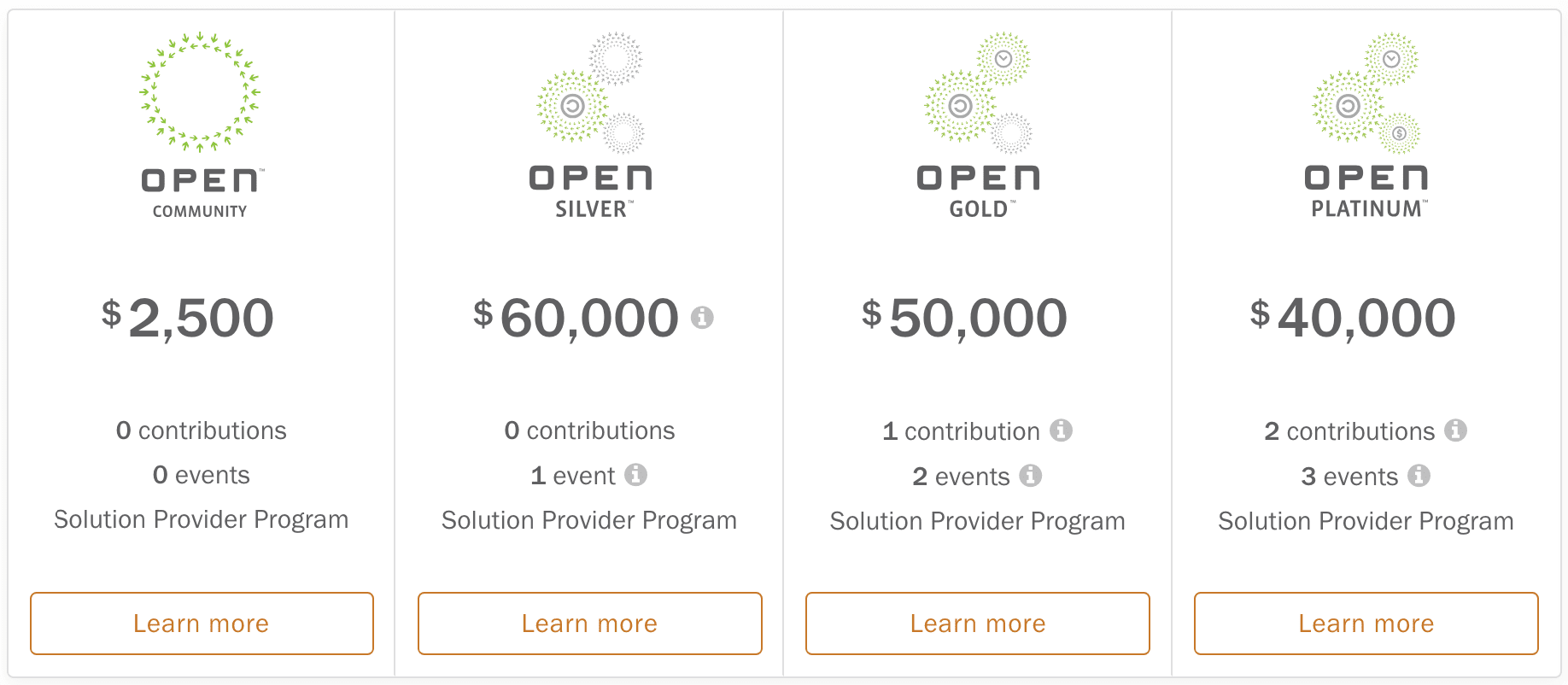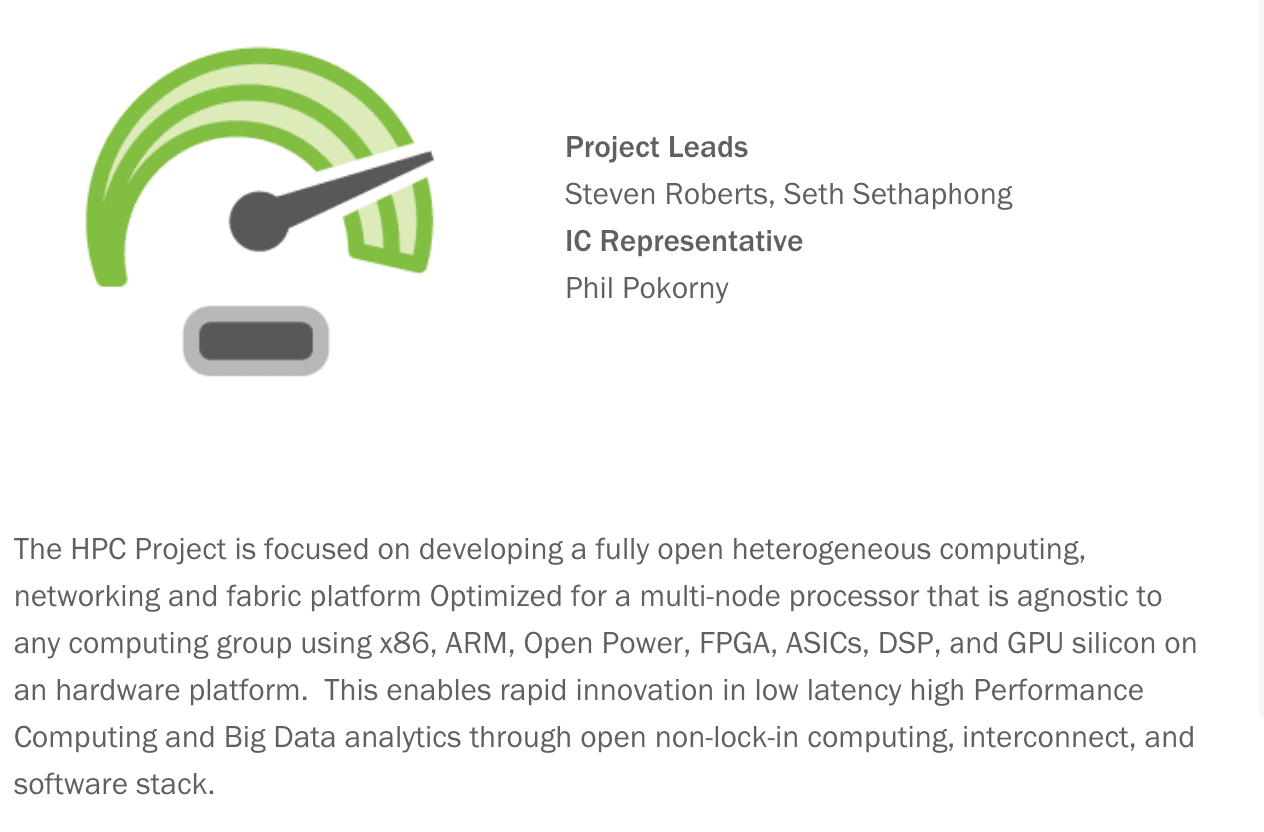How the Open Compute Project Reduced the Power of Proprietary Vendors
Executive Summary
- The Open Compute Project is the most important element that is impacting hyper-cloud environments.
- Open source has greatly influenced The Open Compute Project.

The Open Compute Project
The Open Compute Project brings open-source principles from software to hardware. This also connects to other research by Brightwork Research & Analysis. This research calls into question the value-add of much of the private research and development in the computer hardware and software industry. Private R&D has proven to be nothing like academic or government-funded R&D. Instead. Private R&D naturally leads to proprietary threads that are only designed to benefit the company performing the R&D, with as little as possible benefit bleeding outside of the company (unmonetized). If we look at pharmaceuticals, for instance, the actual intellectual property is created outside of the pharmaceutical companies (mostly at universities and funded by taxpayer dollars through the National Institutes of Health). Pharmaceutical companies pay for clinical trials and differentiate and then market the items (often based upon false claims). This is why we have six different statin drugs that are essentially the same chemical compound (with just enough of a change in chemistry to get a new patent)—the same thing with anti-depressant drugs, most of which have very low to no benefits to patients.
However, in the pharmaceutical industry in the US and Europe, drugs’ effectiveness is a distant second to the ability to profit from drugs, regardless of whether they do much of anything. There is no responsibility in the health care professionals to keep ineffective drugs from being prescribed. As pharmaceutical companies are so influential in the FDA, they can get even the most ineffective and even dangerous drugs approved (in the US). Seventy-eight percent of new patents for drugs are for drugs that are already on the market but patented by a different or competitive pharmaceutical company (so-called copycat aka me-too drugs). This is consistent with private companies preferring fake innovation over real innovation. In fact, a big part of what private companies spend their marketing dollars on is to claim innovations they had nothing to do with.
“Part of the problem is how pharmaceuticals use the patent system. Instead of creating new drugs, they extend existing patents beyond the initial 20-year protection set by the United States and use gimmicks, such as overly-wide patents, to block knowledge creation and issue patents for what is essentially the same drug. Losec, for example, which is produced by AstraZeneca to treat heartburn and ulcers, was later tweaked and placed under a new name. This enabled the company to issue a new patent for the barely modified medication, effectively extending the company’s monopoly on this type of drug well beyond the period granted by the original patent.
What’s more, while taxpayers are largely footing the bill for drug research, pharmaceuticals are reaping all the gains. Sofosbuvir, which treats hepatitis C, emerged from over 10 years of U.S. taxpayer-funded research — through the Department of Veterans Affairs and the National Institutes of Health. But when the private biotech company Gilead Sciences later acquired the drug, it priced a 12-week course of pills at $84,000 in the U.S. market. By the end of 2017, Sofosbuvir had generated over $50 billion in sales.
Sofosbuvir is not an exception. The U.S. taxpayer has funded research for every single one of the 210 new drugs that the FDA approved between 2010-16.(emphasis added) Yet the companies that have access to this research are increasingly viewing pharmaceuticals in the same way that banks view their financial product — opportunities for short-term returns.”
What This Says About the Standards of the FDA
The quote above is possible because FDA standards are so low that no new drug is compared against any previous drug in US clinical trials. Instead, each clinical trial is carried out as if no current drugs exist. In many cases, this means there are more effective drugs to treat the same conditions already on the market (sometimes patent-protected, sometimes generic). And even when pitted against a placebo, there is no minimum level of improvement required for a drug to receive FDA approval. Therefore a drug may be only .05% more effective than a placebo, yet it will still receive FDA approval. When the drug is marketed, this tiny percentage of improvement will be papered over by a brilliant advertising campaign. Furthermore, much of the marketing goes to convincing potential customers that one me-too drug is better than another me-too drug, even though the drugs will be nearly chemically identical. Pharmaceutical companies are unconcerned with providing evidence for the claims of the superiority of one chemical compound over another nearly identical chemical compound. Doctors, in most cases, do not have time to read the original clinical trial (which was rigged by the pharmaceutical companies in the first place) and primarily get their information about pharmaceuticals from attractive pharmaceutical sales reps.
Who Funds Pharmaceutical Research?
All of this brings up the question of why, if most of the research is funded by US taxpayers, pharmaceutical companies are allowed to obtain a patent for what often amounts to funding a clinical trial, and in many cases falsifying the results. Pharmaceutical companies have a long-established history of not publishing clinical trials where the trial results are negative (that is, no benefit over a placebo).
This gets into the established convention regarding sharing publicly-funded research, as is explained in the following quotation.
“The notion of sharing source code with the world owes a great deal to the academic tradition of publishing results so others can read them, think about them, critique them, and ultimately extend them. Many of the government granting agencies like the National Science Foundation and the Defense Advanced Research Projects Agency fostered this sharing by explicitly requiring that people with grants release the source code to the world with no restrictions. Much of the Internet was created by people who gave out these kinds of contracts and insisted upon shared standards that weren’t proprietary. This tradition has fallen on harder times as universities became more obsessed with the profits associated with patents and contract research, but the idea is so powerful that it’s hard to displace.”
Pharmaceutical companies refuse to direct their research to items with high social health benefits, which is for promoting medicine in the public interest. The focus of pharmaceutical development is on drugs purchased for chronic conditions rather than for drugs that provide cures. This is due to the desire for a recurring revenue stream. Goldman Sachs has asked.
“Is curing patients a sustainable business model?”
The Pattern of Private R&D
The pattern of private R&D across many industries is clear. The private entity seeks to keep their “innovations” secret and exaggerate the benefits or outcomes of their IP. If we look at Oracle’s claims around their database, they do not actually match the differences between their database and open source. And of course, Oracle wants to be paid exorbitant sums for the R&D that do they perform. And as a percentage of revenues, Oracle spends little on R&D, and most of its expenditures (like a pharmaceutical giant) are in sales and marketing.
Everywhere one looks in the software industry, one observes exaggerated innovation claims. Many of these claims have to do with taking credit for things that were part of open source projects, as the following quotation explains.
“Even today, companies like Sun like to brag that their TCP/IP forms the backbone of the Net, and this is one of the reasons to buy a Sun instead of an NT workstation. Of course, the code in Sun’s OS has a rich, Berkeley-based heritage, and it may still contain some of the original BSD (open source) code for controlling the net.”
The fact is, a hierarchical organization does not work very well for managing creative efforts. If we look at some of the world’s largest software vendors (Microsoft, SAP, Oracle, and IBM), we see some of the lowest levels of innovation. This is true even though these companies have enormous numbers of resources. Money does not equal innovation. When one looks at a company like Microsoft, it seems impossible to think roughly 116,000 people work there. Windows either stays the same or degrades from year to year, the Office suite is roughly the same as it was 10 years ago, SQL Server is a copy of other RDBMSs, Azure is mostly just copied from AWS/GCP but marketed to Microsoft customers. And Microsoft has failed at a large number of major well-funded projects. If we look at the large consulting companies in the IT space such as Deloitte, Accenture, KPMG, E&Y, WiPro, Infosys, TATA, we see not only low levels of intellectual property development, but entities with enormous hierarchy, which is always a bad thing for IP.
Who Supports The Open Computer Project
The Open Compute Project and its large corporate support mean that the long-term decline in proprietary hardware will likely accelerate. Hardware buyers (not just servers, switches, etc.…) will increasingly place specifications on The Open Compute Project. This will mean that the design work will increasingly migrate from the proprietary hardware providers to the large customers of server hardware.

This is a diagram of a switch contributed by Edgecore Networks.

The Open Compute Project supports itself with fees. Different levels of membership allow for different levels of specification contributions and Open Compute Project event attendance. The Open Compute Project can be thought of as an open-source project, but for hardware.

Each project is described out at The Open Compute Project.
The Contributors to the Open Compute Project
The Open Compute Project lists the following contributors. Still, we have sorted them by the number of article contributions they have made to the Open Compute Project website, which gives a rough indication of the participation level. The number listed next to the name describes the number of designs or specifications that contributed to the project.
- Facebook 44
- Microsoft 38
- Edgecore 16
- AT&T 6
- Delta 6
- Alpha Networks 4
- Mellanox 4
- Quanta 4
- Broadcom Limited 3
- Fidelity 3
- Intel 3
- BigSwitch 2
- Dell Inc. 2
- Google 2
- IBM 2
- Inventec 2
- MiTAC 2
- Nokia 2
- Rackspace 2
- Radisys 2
- SK Telecom 2
- Wiwynn 2
- ADLink 1
- Amphenol 1
- Deutsche Telekom 1
- Finisar 1
- Flex 1
- HPE 1
- Hyve 1
- Inspur 1
- Keysight Technologies 1
- Lenovo 1
- Marvell 1
- Mojo Networks 1
- Nephos Inc 1
- Netronome Systems 1
- RITTAL 1
- Schneider 1
- TE Connectivity 1
- UNH-IOL 1
Notice how AWS is not on the list? This is consistent with AWS not contributing to open source or community projects, preferring to benefit from such projects while maintaining their secrecy.
This is explained in the following quotation.
“Indeed, Amazon seems content to pick up open source projects and offer them as managed services with no commercial agreements or development efforts to push the OSS projects forward.”
Conclusion
The Open Compute Project is pushing design away from the hardware vendors and to the buyers. This project is inspired by open-source software projects that will standardize servers and reduce servers’ prices and undermine proprietary server vendors.